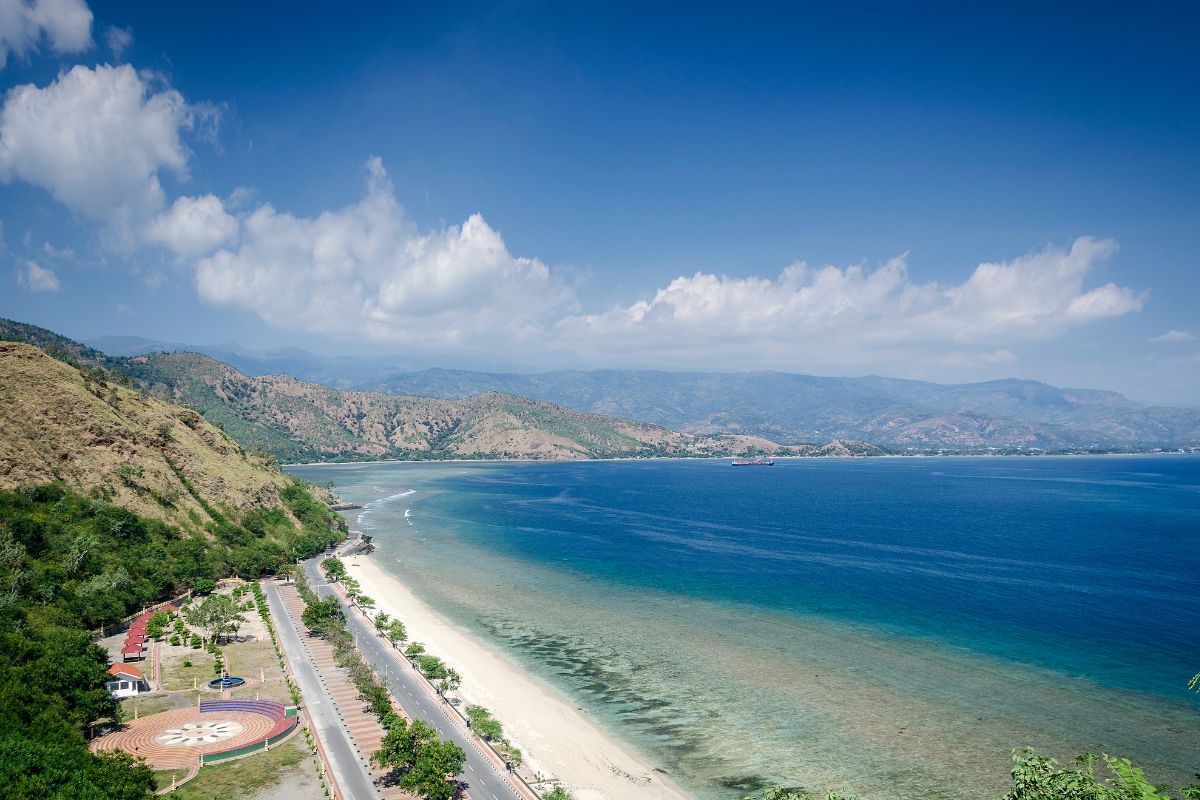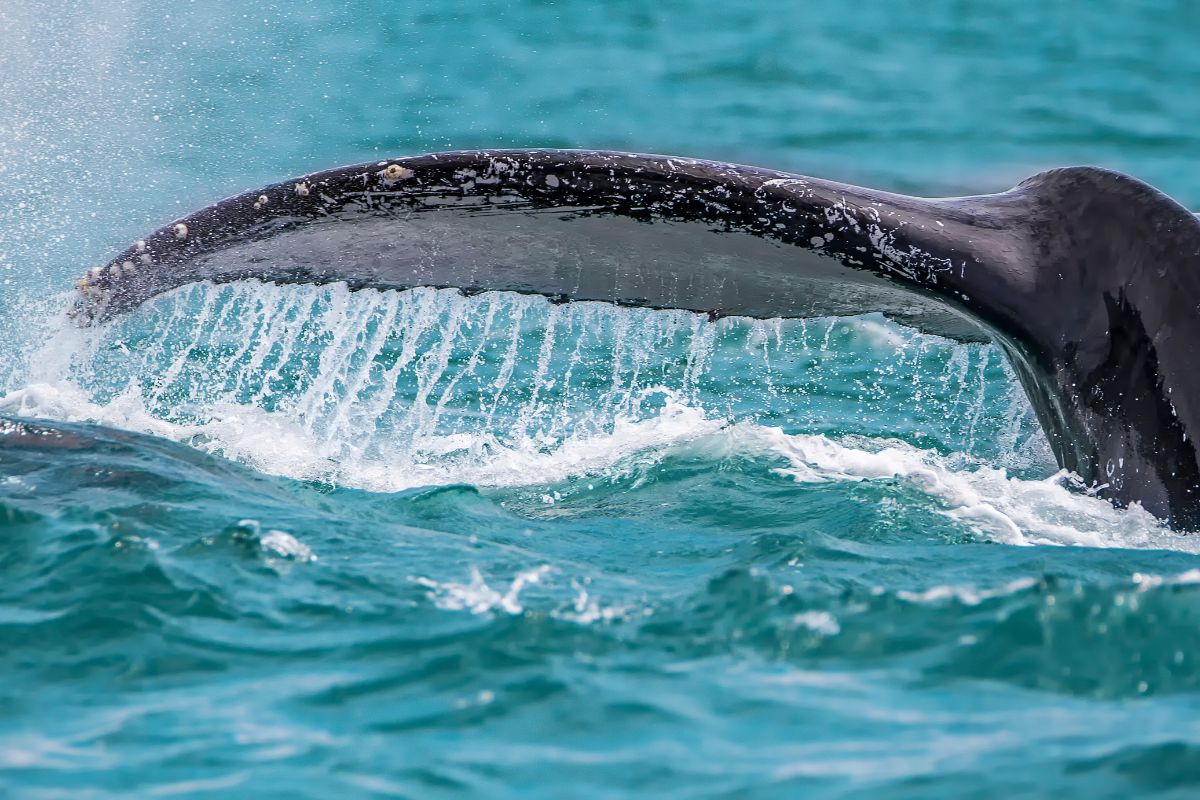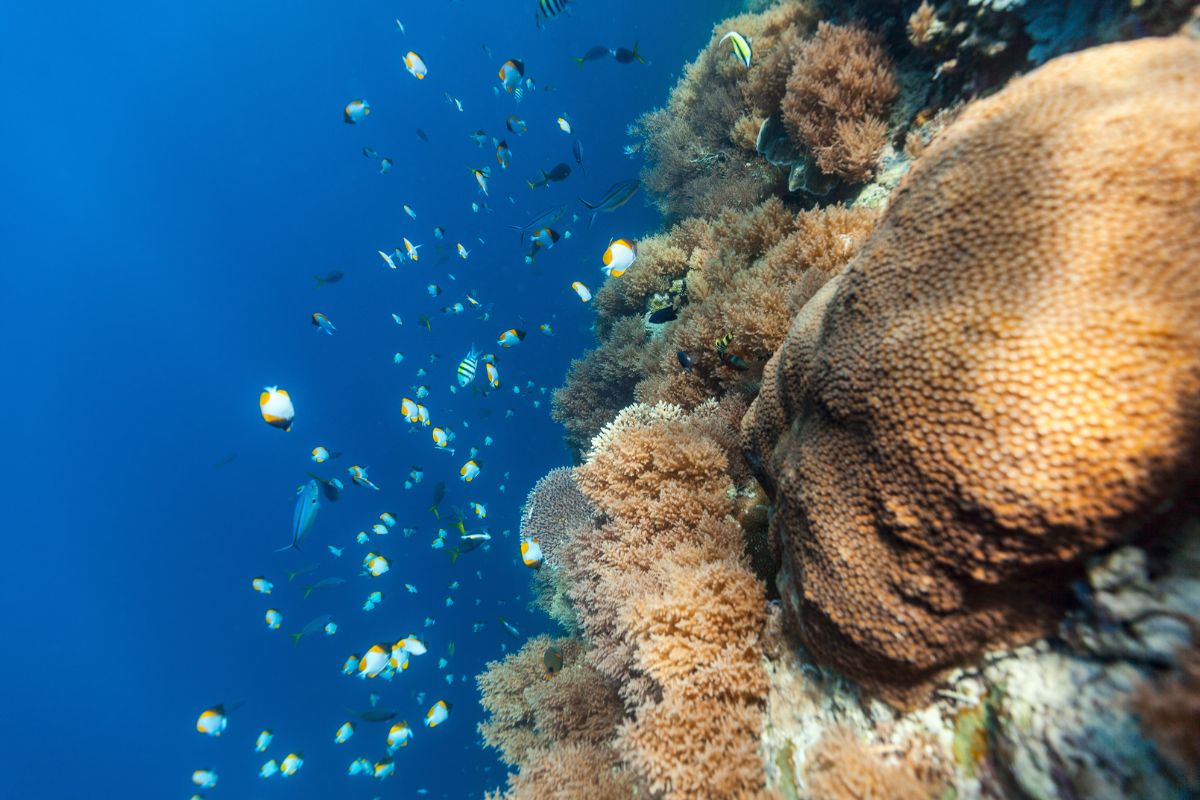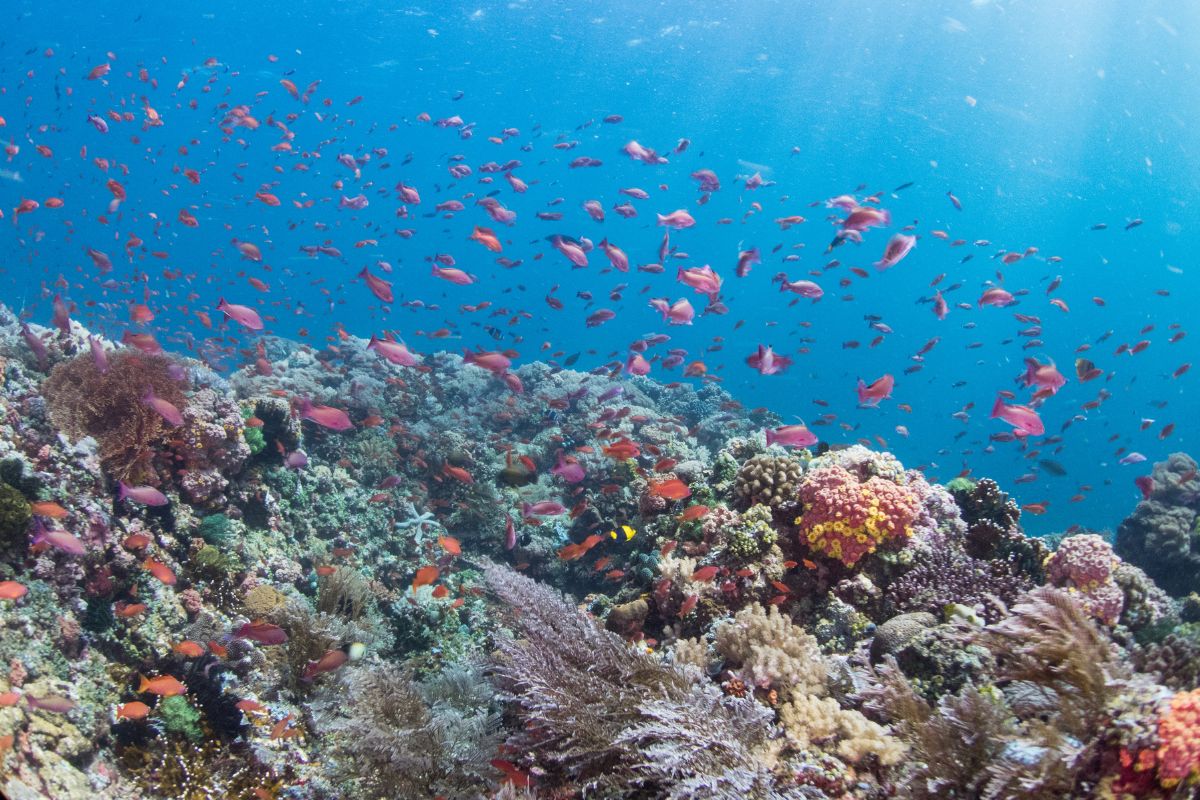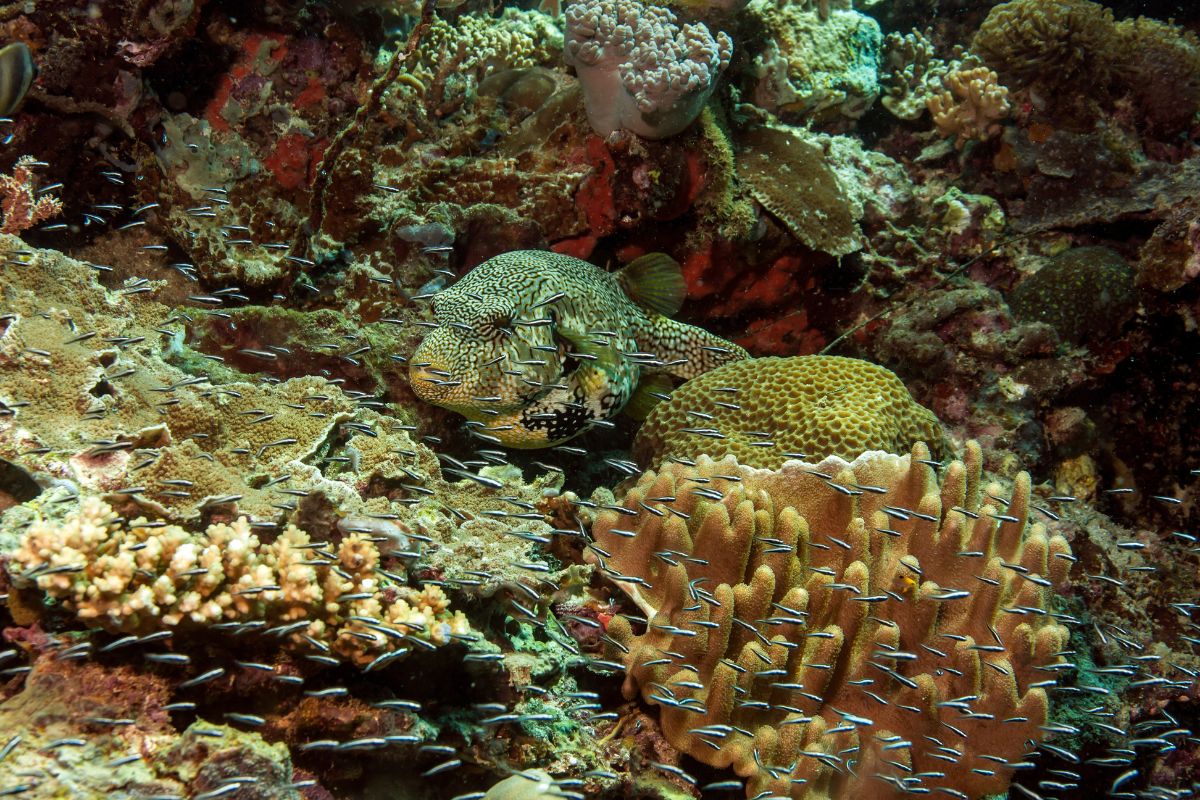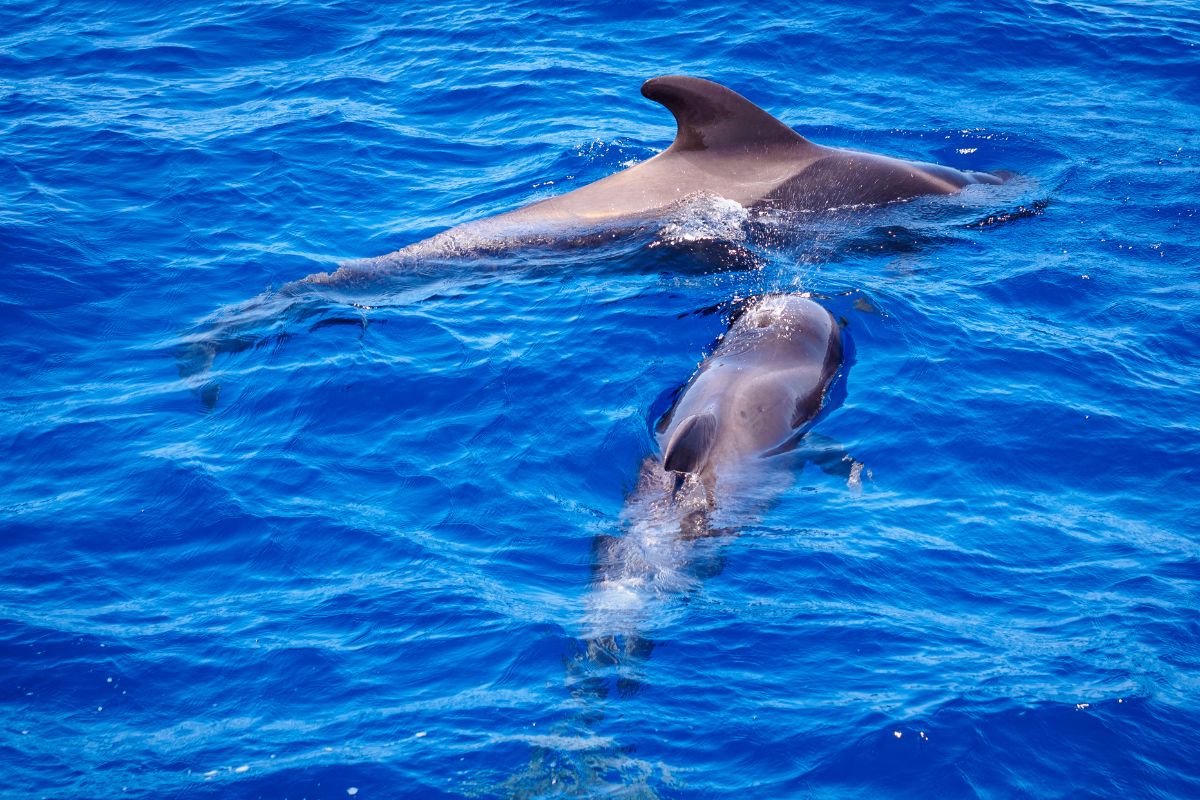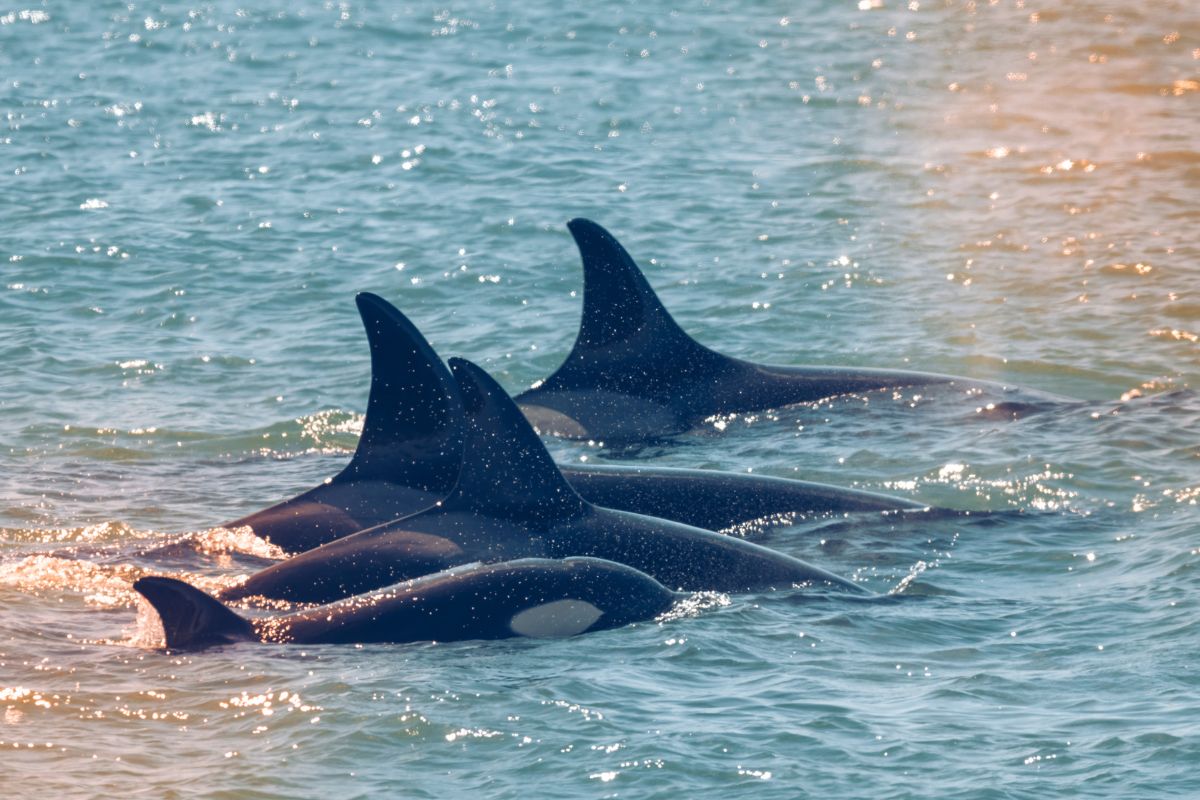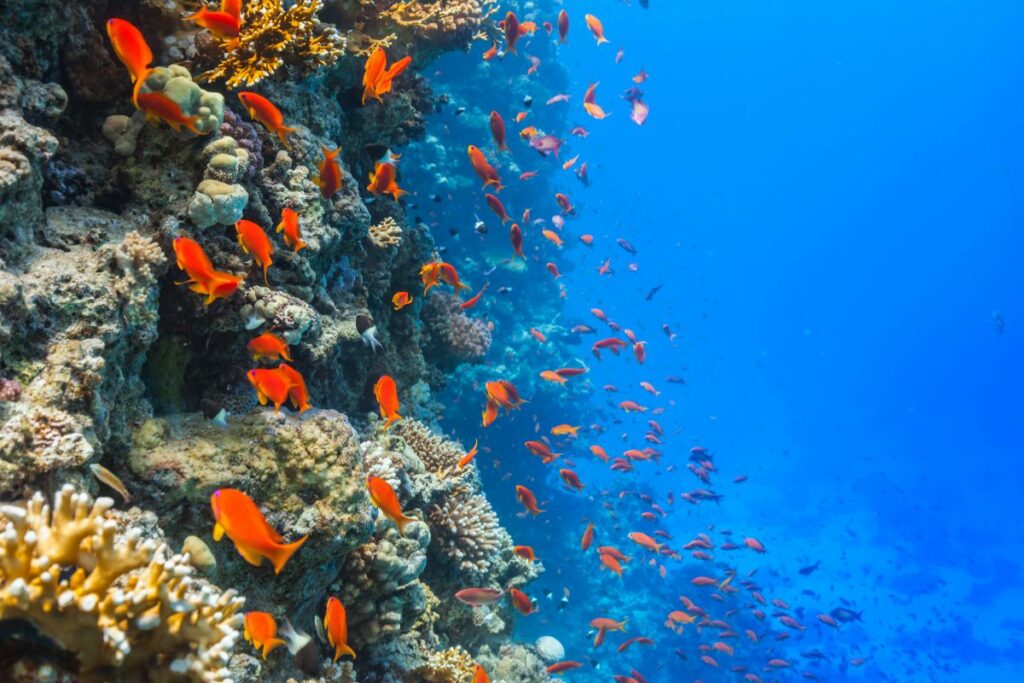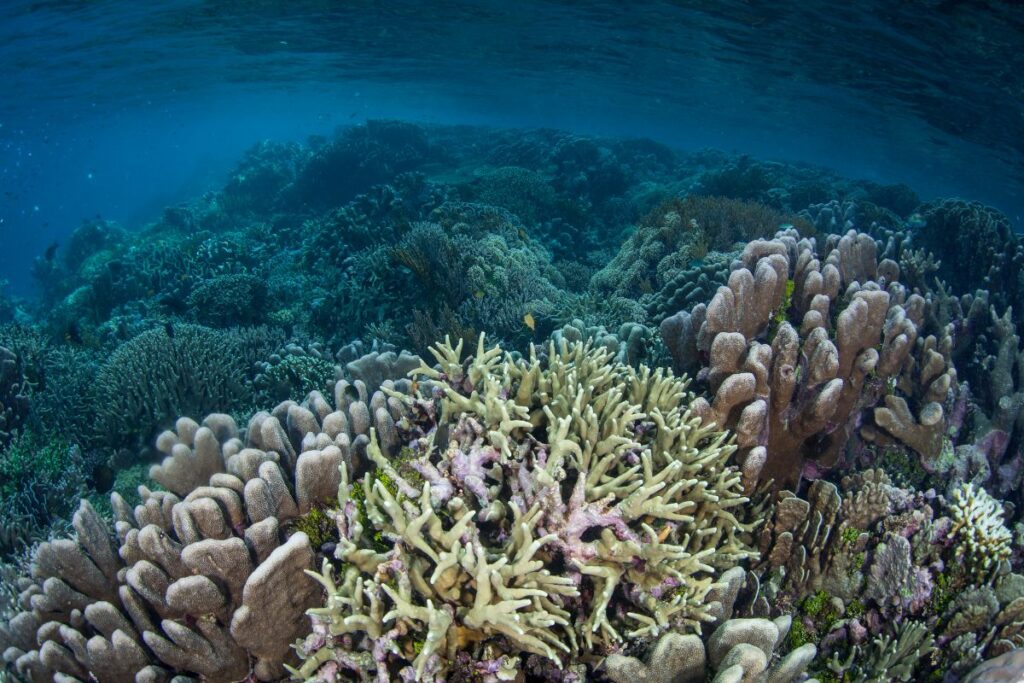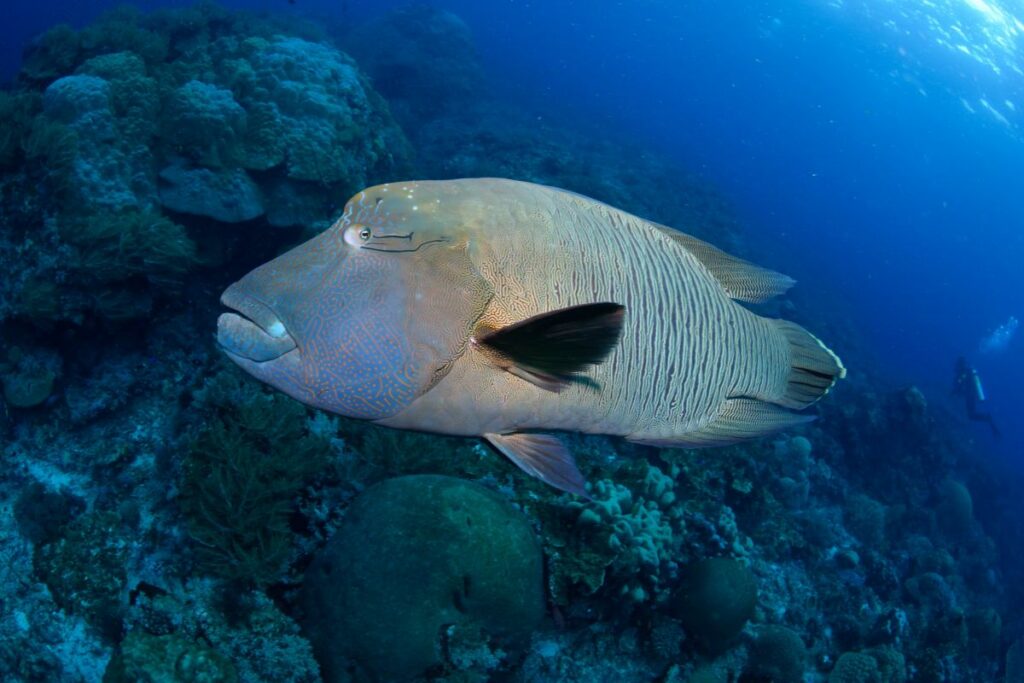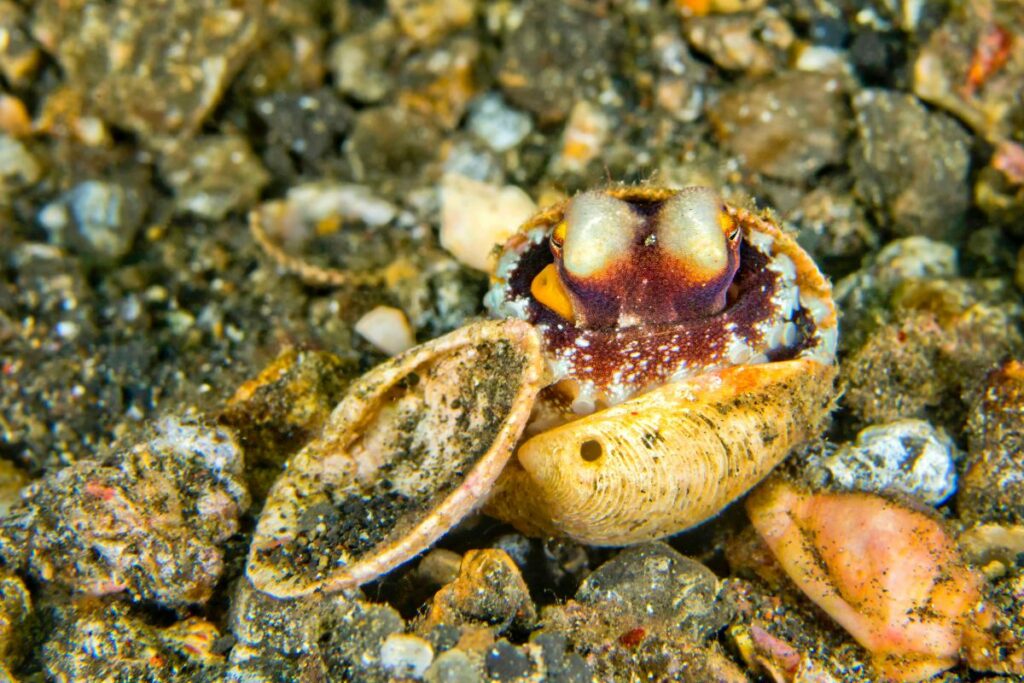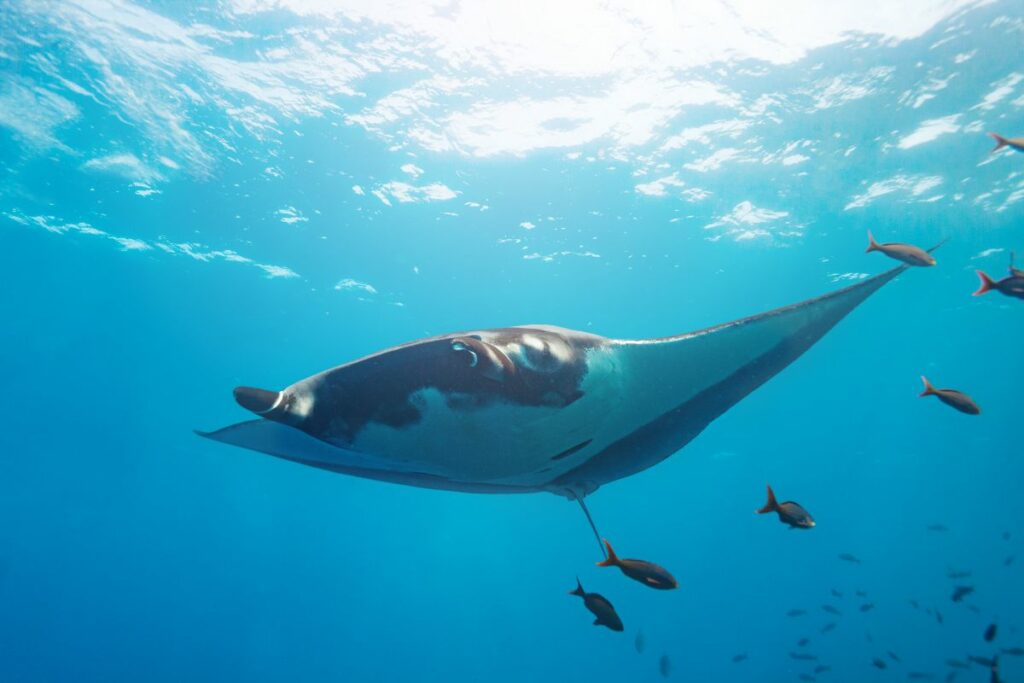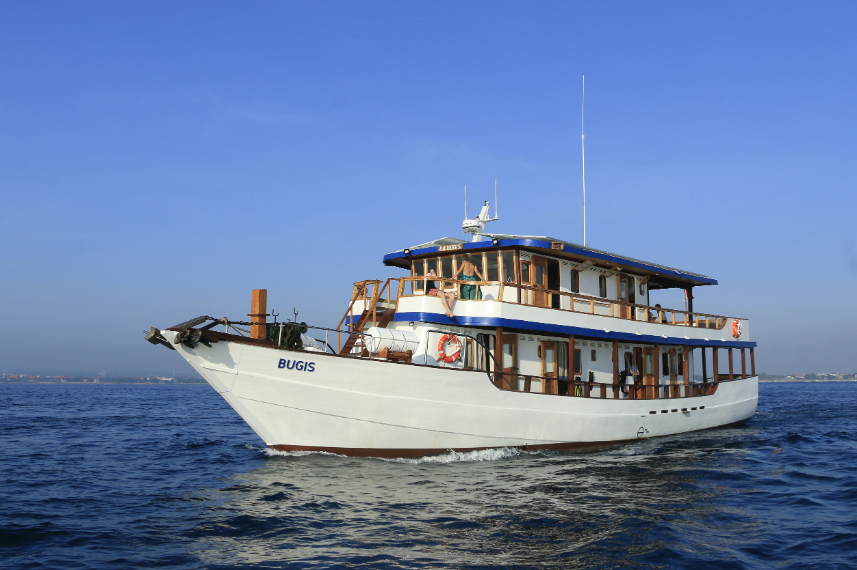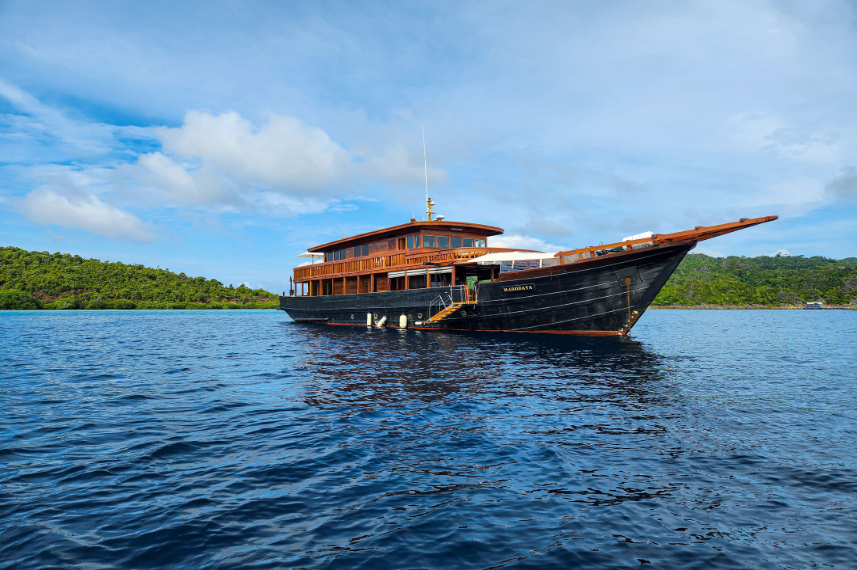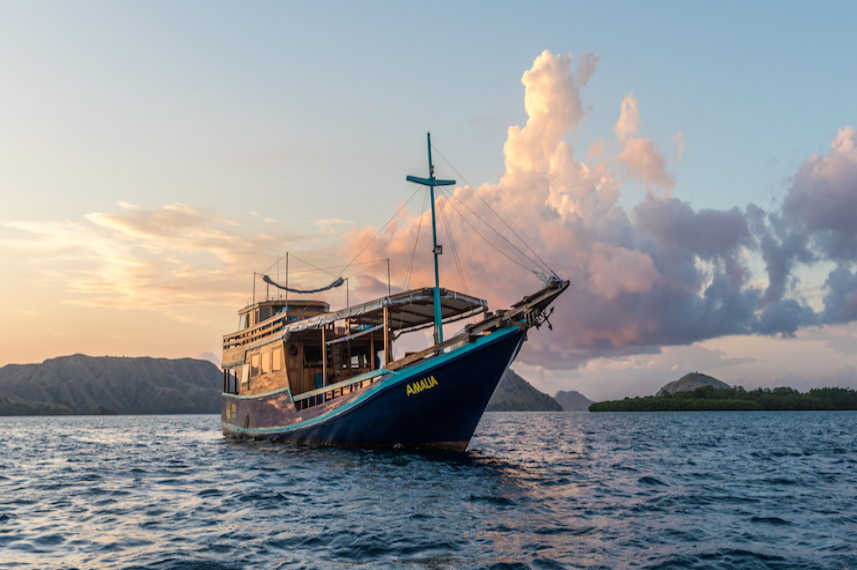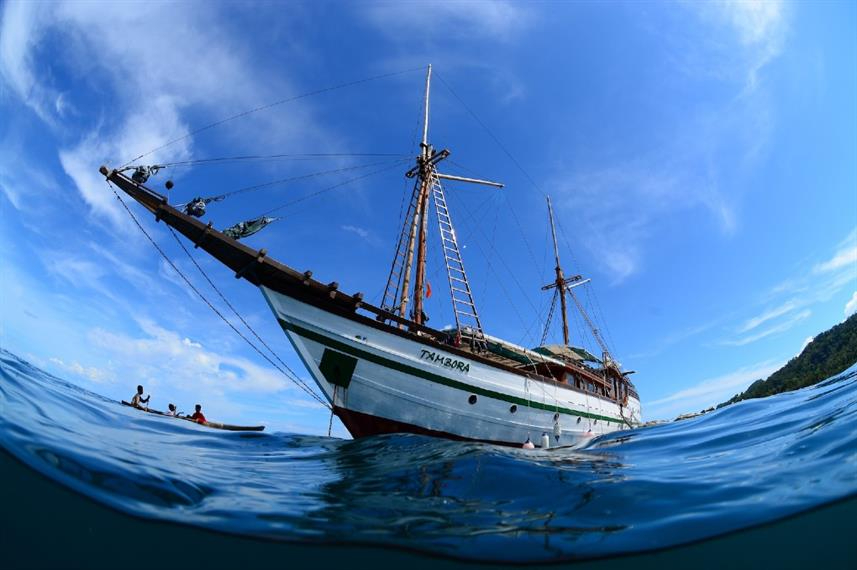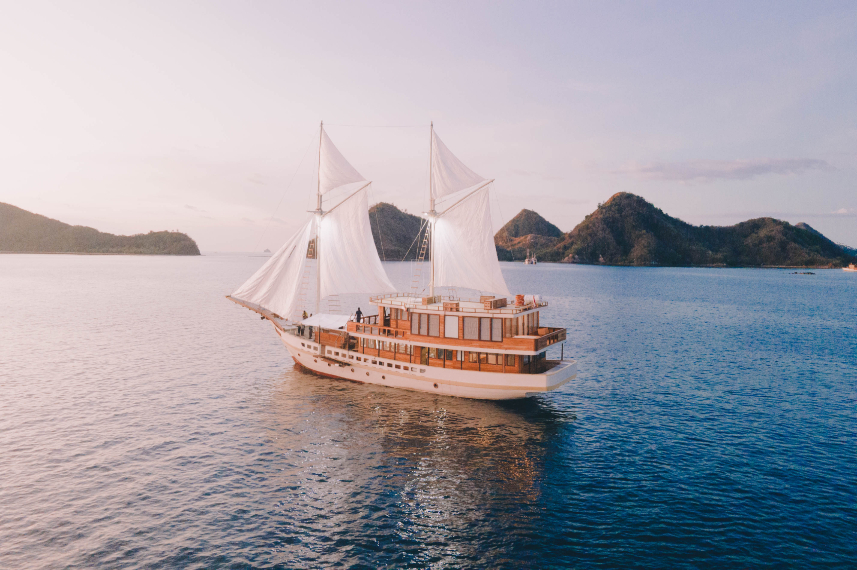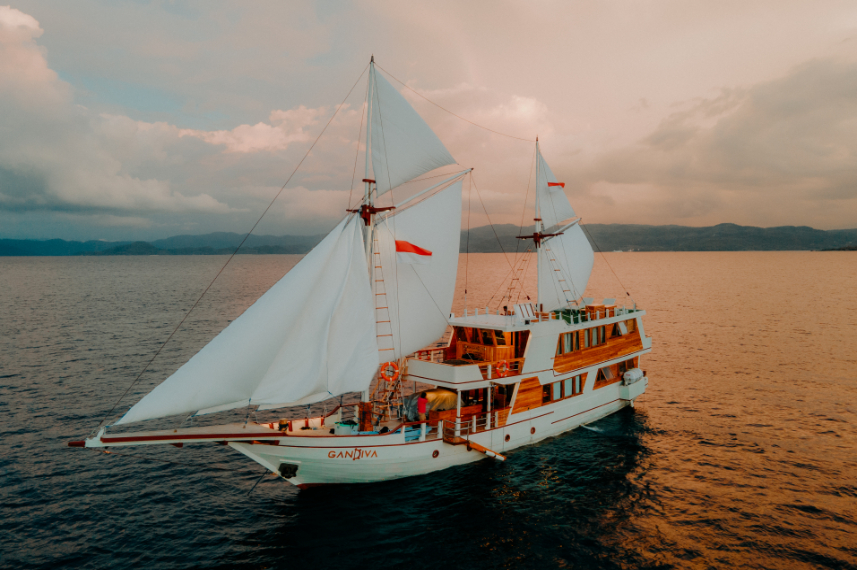Timor
Surrounded by Ombai and Wetar Straits in the north as part of the Banda Sea and the Timor Sea in the south, it is no surprise that the marine biodiversity in this region is astonishing. Part of the Coral Triangle, Timor-Leste boasts over 2000 species of fish and 600 species of corals, with the highest number of fish species recorded in a single dive, only coming second to Raja Ampat.
Timor-Leste or East Timor is rarely mentioned in a conversation when it comes to diving, but the lack of visitors has helped preserve the coral reefs. Going here means less crowd and the perfect opportunity to explore many of the incredible dive sites in the youngest country in Southeast Asia. This is the place to go for any adventurous divers.
Top highlights of Timor
- The whale sightings, especially during the peak migratory periods, are the must-do activity in Timor-Leste
- Head to Atauro Island for some spectacular dive sites with walls and reef
- Do not miss muck diving in Tasi Tolu, a dive site often compared to Lembeh Strait
- Explore the uninhabited Jaco Island in the far east of Timor-Leste, known for its spectacular biodiversity and part of Nino Konis Santana National Park
About Timor
The history of Timor-Leste, or its predecessor name, East Timor, is tumultuous. The country was a Portuguese colony from the 16th century until its independence in 1975. But soon after, the Indonesian government annexed this island as part of Indonesia. In 1999, Indonesia relinquished control of East Timor due to the act of self-determination supported by the United Nations. In 2002, it officially became the new sovereign state of the 21st century.
For a small island, Timor-Leste has around 19 indigenous languages with up to 30 dialects, with Portuguese and Tetum acting as two official languages. Indonesian and English are still commonly used, designated by the constitution as working languages.
East Timor is among the poorest countries in the world, and the country doesn’t produce enough food to be self-sustaining and relies on imports. Most of the population relies heavily on oil and gas, and the country is labeled the most oil- dependent economy in the world by the IMF.
Diving in Timor
To some people, Timor-Leste is one of those obscure destinations that no one ever heard about. Still, to some others, it is precisely the actual definition of a hidden paradise because only a few people associate this small country with diving.
Diving in Timor-Leste is something worth exploring. With walls, pinnacles, and even muck diving, this region boasts some of the most stunning dive sites in the Coral Triangle. Different species of fish, from schools of anthias, groupers, barracudas, tuna, and snapper to cuttlefish, scorpionfish, triggerfish, frogfish, sweetlips, trevallies, filefish, and others, can be found here, swimming around the rich-nutrients waters. Hard and soft corals in various colors and species, with sea fans, sea whips, and sponges, create ideal environments for fish and critters. Pygmy seahorses, crabs, shrimps, and octopuses from various species are present here.
Timor-Leste is also home to many cetaceans, especially whales, dugongs, and dolphin species. Some species of whales are migratory, and others can be found year-round. Shark species like whitetip, blacktip, thresher, scalloped hammerhead, and whale sharks can also be spotted in Timore-Leste. Manta rays, mola-mola, turtles, banded sea snakes, and giant clams add to the diversity that Timor-Leste has to offer.
Discover your next adventure in
The Whales' Highway in Timor Leste
The narrowest Ombi-Wetar Strait may only stretch 20 kilometers wide. Still, with the underwater cliff and a depth that reaches beyond 3000 meters, this body of water between Timor Leste and Atauro Island is the global whale hot spot. Whales are easily spotted here during the migratory period from June to August (toward Indonesia) and October to December (toward Australia).
One-third of the Cetaceans species acknowledged worldwide can be seen in Timor- Leste’s waters, with some species migratory and others being found all year round. Pygmy blue whale (Balaenoptera musculus brevicauda) is the typical subspecies found during the migratory period. They travel around 10,000 kilometers from their feeding grounds in southern Australia before breeding and calving in the Banda Sea. Pygmy blue whale is undoubtedly not the only one. Toothed whales, killer whales, Bryde’s whales, sperm whales, beaked whales, sei whales, and humpback whales are among the species/subspecies of whales passing the straits. Pilot and melon-headed whales are also commonly found.
Superpods of different dolphins are the second-best thing about Ombi-Wetar Strait. From Risso’s to Fraser’s dolphins, spotted, roughed-toothed, and spinner dolphins are often spotted throughout the year. The geography and the rich nutrients in the water contribute to these cetaceans’ presence in the region, making this the highlight of visiting Timor-Leste.
Diving Environments in Timor
The topography of diving in Timor-Leste primarily consists of reefs, walls, and muck diving, with the depth of most of the dive sites ranging from 5 to 40 meters. The visibility in Timor-Leste is exceptional. It ranges from 5 to beyond 40 meters, especially during the dry season. The visibility decreases significantly once the rainy season occurs, coupled with rough ocean conditions and regular downpours.
The water temperature is warm, from 25 to 31 degrees Celsius all year, making it ideal for diving without a thick wetsuit. Depending on the location, this condition is not the same in every dive site.
Discover your next adventure in
How to get to Timor
As the country’s capital, Dili is the entry point before heading to the various dive sites around Dili and Atauro Island. A direct flight is available from Bali through Aero Dili and Citilink. There are no direct services from other parts of Indonesia, including Jakarta and Surabaya, as you must get to Bali first. Qantas Airways offers direct service to Dili from Darwin, Australia, which only takes 55 minutes.
Once landed in Dili, if you wish to go to Atauro Island, the home to some incredible dive sites, the journey is reachable by ferry and speedboats. It takes approximately one to three hours, depending on your mode of transport.
Liveaboard is the perfect option to explore Timor-Leste, including the trip to Jaco Island. This tiny island is located in the easternmost part of Timor-Leste and is often included in the itinerary, alongside the journey to the Atauro Island.
Diving Seasons & Weather in Timor
Though diving in Timor-Leste is accessible all year long, the best period to dive is from May to November. During this dry season, the water temperature is warm, the visibility is excellent, often reaching 40 meters, and the weather ranges from 22 to 31 degrees Celsius, with few raindrops.
December to April is the wet season, with February being the worst month to go as floods and landslides sometimes occur. June to August and September to December are the perfect periods to visit for whale watching as Ombai and Wetar Straits become the migratory route for whales.


